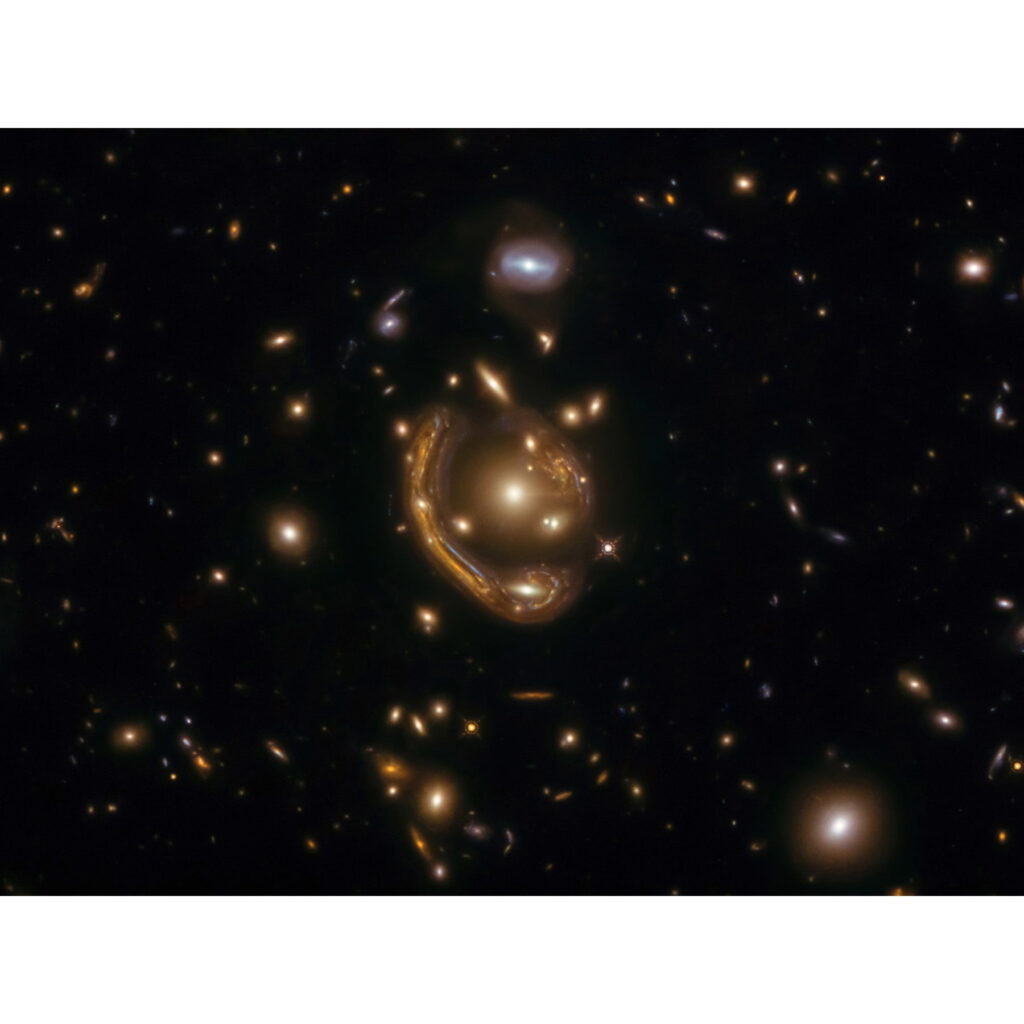
Audience
- Sentiment: Positive
- Political Group: Generally neutral; likely to appeal to both scientific and exploratory interests across the spectrum.
- Age Group: Young adults and adults, particularly those interested in science, astronomy, and education.
- Gender: Both genders are likely to be equally interested, with perhaps a slight inclination towards males due to historical trends in STEM interest.
Overview
- Astronomers discovered a rare Einstein ring using the Euclid space telescope, located 590 million light-years away.
- The discovery helps enhance our understanding of galaxy formation and dark matter distribution.
- The Euclid space telescope will continue exploring the universe, potentially revealing more cosmic phenomena.
Astronomers Discover Rare Einstein Ring Near Earth Using Euclid Space Telescope
Have you ever looked up at the night sky and wondered what lies beyond our planet? The universe is full of mysteries, and astronomers are constantly discovering new and fascinating phenomena that expand our understanding of space. One such discovery has just come to light, literally! A team of astronomers has found a rare celestial object known as an Einstein ring, and the best part? It’s only about 590 million light-years away from us! This astonishing find was made using the European Space Agency’s latest tool for cosmic exploration—the Euclid space telescope.
What Is an Einstein Ring?
Before we dive deeper into this fascinating discovery, let’s explain what an Einstein ring is. An Einstein ring is a beautiful and unusual phenomenon that occurs when the light from a distant galaxy gets bent and stretched around a massive object, like another galaxy. Picture it like this: when you look at a spoon half-submerged in a glass of water, the spoon appears bent where it meets the water. This bending happens because the water (which has mass) distorts the light. In space, the same idea applies, but on a much grander scale!
The gravitational pull of a massive galaxy can warp the light from a more distant galaxy behind it, creating a circular ring of light—hence the name “Einstein ring.” This phenomenon is named after the famous physicist Albert Einstein, who predicted that gravity can bend light. Sounds cool, right? This phenomenon is not just a pretty sight; it tells astronomers a lot about the universe, such as the distribution and types of galaxies.
The Discovery
The new Einstein ring, discovered around galaxy NGC 6505, is something quite special. The fact that this ring was found so close to our own galaxy—590 million light-years away—makes it even more exciting. The discovery was made using the advanced technology of the Euclid space telescope, which was launched into orbit by the European Space Agency (ESA) to explore dark energy and dark matter.
But what makes this ring even more remarkable is its formation. Scientists calculated that the chances of finding a perfect Einstein ring like this are just about 0.05%. Imagine rolling a dice with 20 sides—you’d have a much better chance of landing on a number than finding something as rare as this ring! The fact that it was found shows just how powerful and effective Euclid is at unearthing hidden cosmic treasures.
What makes Euclid stand out is its ability to survey massive areas of the sky and conduct detailed observations of galaxies and other celestial bodies. It’s like having a super-detective on the hunt for cosmic mysteries!
The Importance of the Discovery
So why is finding an Einstein ring, especially this one, a big deal? The newly discovered ring has opened up exciting avenues for further research. It surrounds a distant galaxy that is over 4 billion light-years away, which means we can gain insight into the formation and evolution of galaxies at different distances from Earth. The light we see from that distant galaxy has been traveling through space for billions of years. This light helps us understand the conditions and events that occurred long ago, shedding light on how galaxies like our Milky Way may have formed.
Astronomers believe that the unique characteristics of this ring can give important clues about the distribution of dark matter, which is a mysterious substance that makes up about 27% of the universe yet doesn’t emit or reflect light, making it hard to detect. By studying how the ring is shaped and formed, scientists can learn more about how much dark matter is in both the foreground and background galaxies. It’s like piecing together a cosmic jigsaw puzzle!
Bruno Altieri, the astronomer who first detected this incredible ring during Euclid’s testing phase, has earned recognition for his role in this discovery. Researchers are even suggesting to name the lens “Altieri’s Lens” in his honor. It’s neat to think about how a single discovery can shine a light on the hard work and dedication of scientists working in space research.
What’s Next for Euclid and Astronomy?
Now that we know about this ever-so-rare Einstein ring, what comes next? Astronomers are gearing up for more investigations using the insights gained from this find. The Euclid space telescope has a broader mission to explore the mysteries of dark matter and dark energy. Over the next few years, it will collect data across one-third of the entire sky, mapping out billions of galaxies, including more potential Einstein rings. Each of these could challenge our understanding of physics and expose the hidden structures of our universe.
As human beings with a thirst for knowledge, it’s natural to wonder about our place in the cosmos. Discoveries like this Einstein ring may seem small in the grand scheme but play a crucial role in expanding our comprehension of the universe and shifting our perspective on life beyond Earth. It’s like being given a new pair of glasses to enhance our vision of reality.
Encouragement to Explore the Cosmos
If you’re intrigued by this discovery, I encourage you to explore more about astronomy and the surprises it holds. Whether it’s reading books, watching documentaries, or joining clubs at your school, there’s so much to learn! Who knows, maybe one day, you could be a scientist making groundbreaking discoveries or capturing stunning images with telescopes like Euclid.
Imagine what discoveries are yet to be made in the universe’s endless expanse! Each active galaxy and swirling nebula holds the potential for new knowledge. Astronomy not only unlocks the secrets of the universe but also helps us understand fundamental questions about existence itself.
How do you feel about the discovery of the Einstein ring? What other space phenomena do you find exciting? Have you ever looked up at the stars and wondered what’s out there? Share your thoughts in the comments below! Who knows, your curiosity might inspire others to look up and dream!






